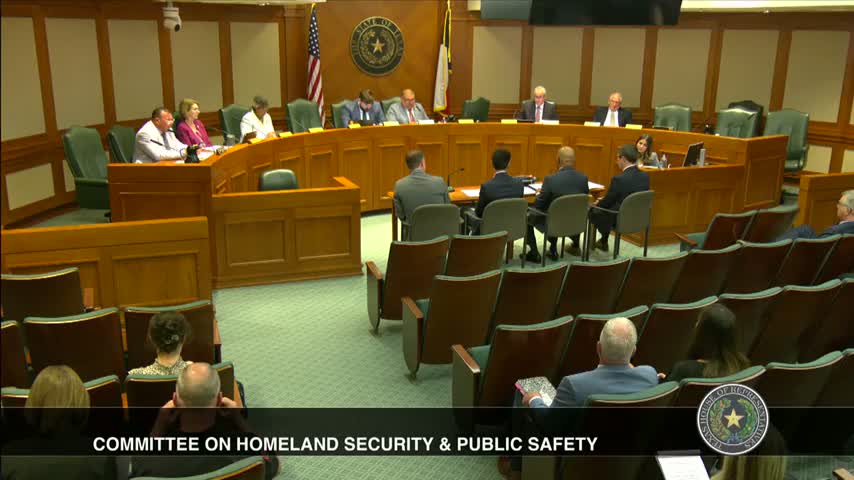Drones revolutionize emergency response with real time data access
August 15, 2024 | Committee on Homeland Security & Public Safety, HOUSE OF REPRESENTATIVES, Legislative, Texas

This article was created by AI summarizing key points discussed. AI makes mistakes, so for full details and context, please refer to the video of the full meeting. Please report any errors so we can fix them. Report an error »

In a recent government meeting, discussions centered on enhancing public safety through the integration of drone technology and improved interoperability among emergency responders. Key stakeholders emphasized the need for a new grant program to support the use of drones in public safety, drawing inspiration from Florida's successful $25 million drone replacement initiative. This program allowed agencies to transition to secure American-made systems, showcasing the potential for drones to provide real-time visibility in complex emergency situations.
Mike Frizzell, Chief Technology Officer of Albers Aerospace, highlighted the importance of actionable surveillance data, including streaming video and live images, in modern law enforcement. He pointed out the challenges posed by inconsistent surveillance data requirements across federal, state, and local levels, which complicate the implementation of effective interoperability solutions. Frizzell urged the government to publish clear standards and specifications to facilitate industry participation in interoperability efforts.
The meeting also addressed the technological advancements in drones, such as the ability to create 2D maps and overlay critical infrastructure information during emergencies. This capability could significantly enhance situational awareness for first responders, particularly in large-scale disasters. Representatives discussed the potential for drones to assist in search and rescue operations by providing aerial perspectives and real-time data sharing among responders.
Concerns regarding privacy were raised, with discussions on the balance between utilizing technology for public safety and protecting citizens' rights. Experts suggested that robust audit logging and accountability measures are essential to ensure responsible use of surveillance technologies. The conversation underscored the necessity of deploying these technologies in a manner that prioritizes immediate operational needs while safeguarding individual privacy.
Overall, the meeting highlighted a collective commitment to leveraging drone technology and improving communication systems to enhance the effectiveness of emergency response efforts, while also addressing the critical issues of privacy and data management.
Mike Frizzell, Chief Technology Officer of Albers Aerospace, highlighted the importance of actionable surveillance data, including streaming video and live images, in modern law enforcement. He pointed out the challenges posed by inconsistent surveillance data requirements across federal, state, and local levels, which complicate the implementation of effective interoperability solutions. Frizzell urged the government to publish clear standards and specifications to facilitate industry participation in interoperability efforts.
The meeting also addressed the technological advancements in drones, such as the ability to create 2D maps and overlay critical infrastructure information during emergencies. This capability could significantly enhance situational awareness for first responders, particularly in large-scale disasters. Representatives discussed the potential for drones to assist in search and rescue operations by providing aerial perspectives and real-time data sharing among responders.
Concerns regarding privacy were raised, with discussions on the balance between utilizing technology for public safety and protecting citizens' rights. Experts suggested that robust audit logging and accountability measures are essential to ensure responsible use of surveillance technologies. The conversation underscored the necessity of deploying these technologies in a manner that prioritizes immediate operational needs while safeguarding individual privacy.
Overall, the meeting highlighted a collective commitment to leveraging drone technology and improving communication systems to enhance the effectiveness of emergency response efforts, while also addressing the critical issues of privacy and data management.
View full meeting
This article is based on a recent meeting—watch the full video and explore the complete transcript for deeper insights into the discussion.
View full meeting
